Key in a search term below to search our website.
Key in a search term below to search our website.
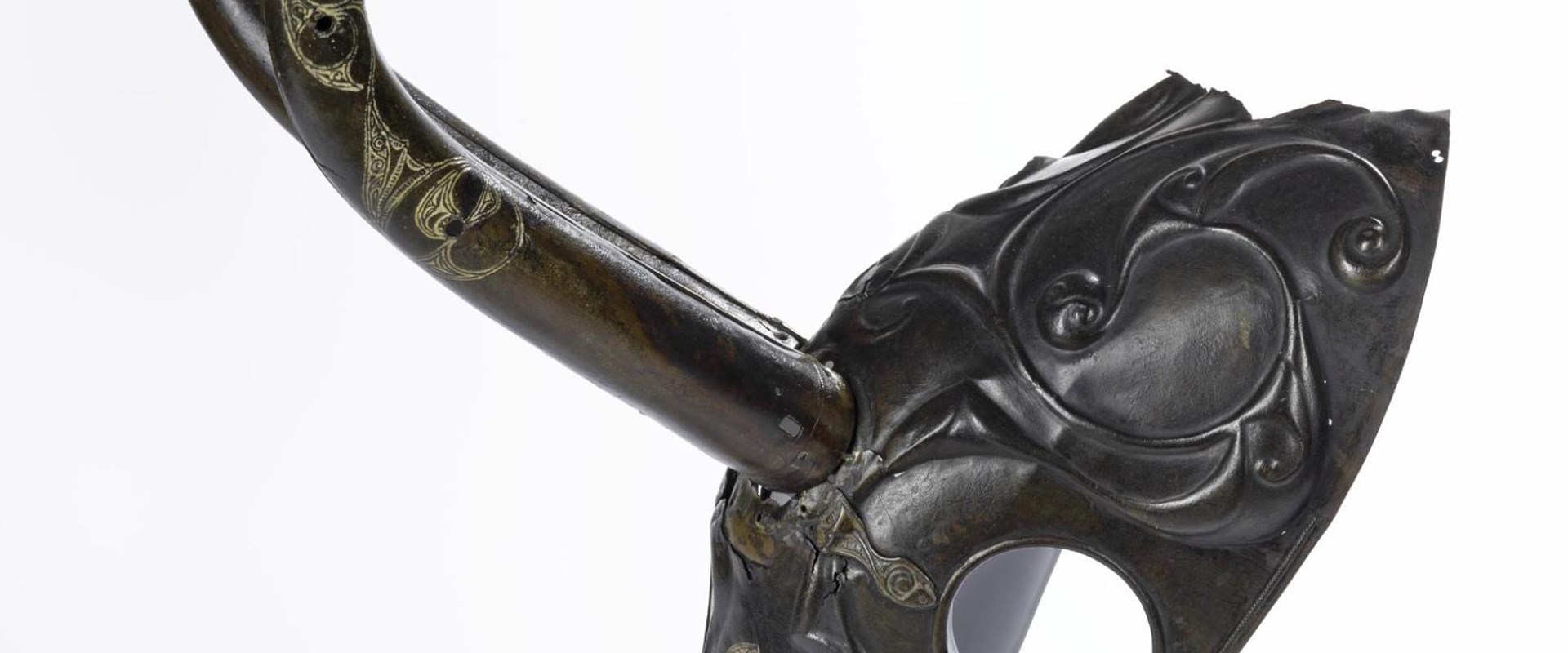
This unique decorated Iron Age cap would have adorned a highly prized pony.
Date
300–200BC
Found
1812
Made from
Bronze
Museum reference
On display
Early People gallery, Level -1, National Museum of Scotland
Did you know?
The horns may have been made for something else, perhaps to decorate the ends of a chariot yoke. However, a recently discovered account confirms that they were attached to the pony cap during the Iron Age, and not stuck on when it was found to enhance its market value!
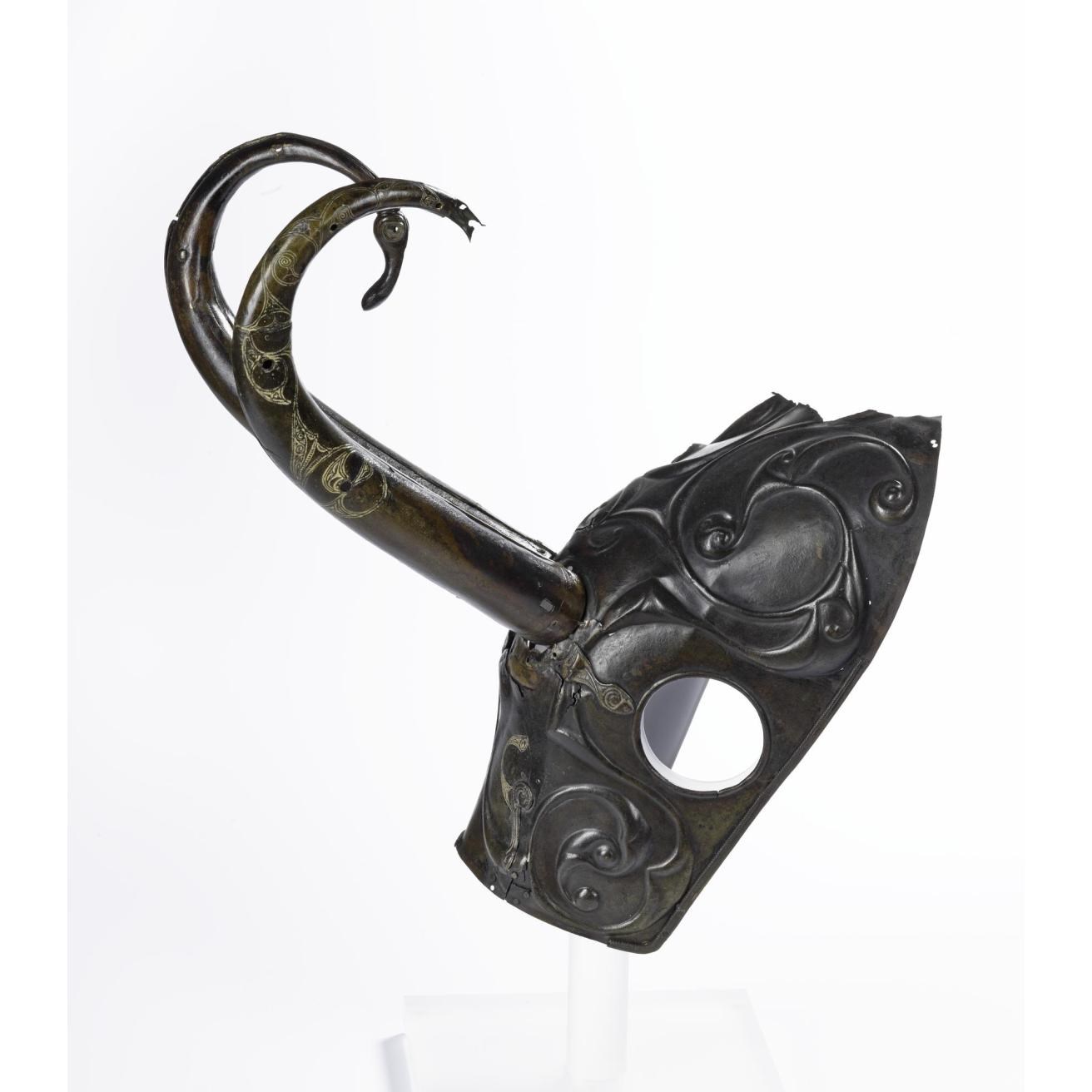
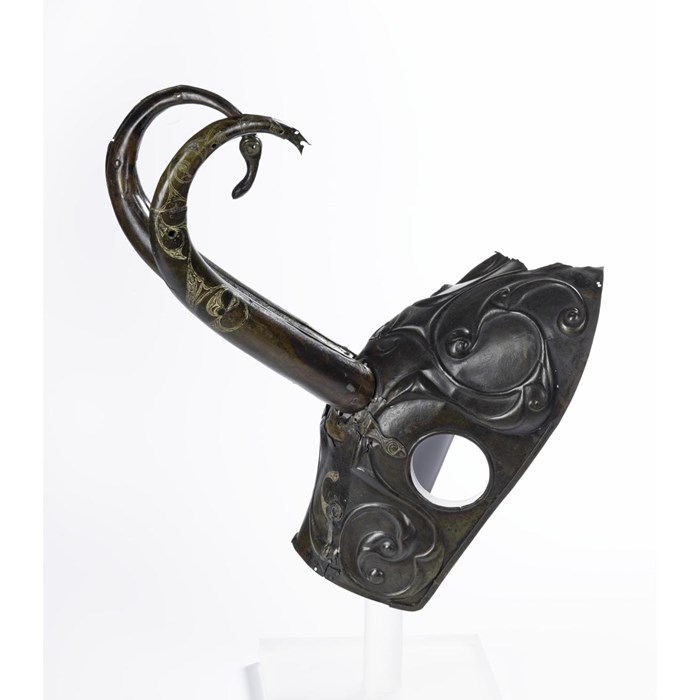
Above: The Torrs pony cap, Dumfries & Galloway, 300-200BC.
The ornate bronze pony cap was found in 1812 by workmen who were draining a bog at Torrs, near Castle Douglas in south-west Scotland. Part of the cap was lost when the peat-cutter’s spade went through it.
The pony cap was acquired by local antiquarian Joseph Train, who made this drawing of it.
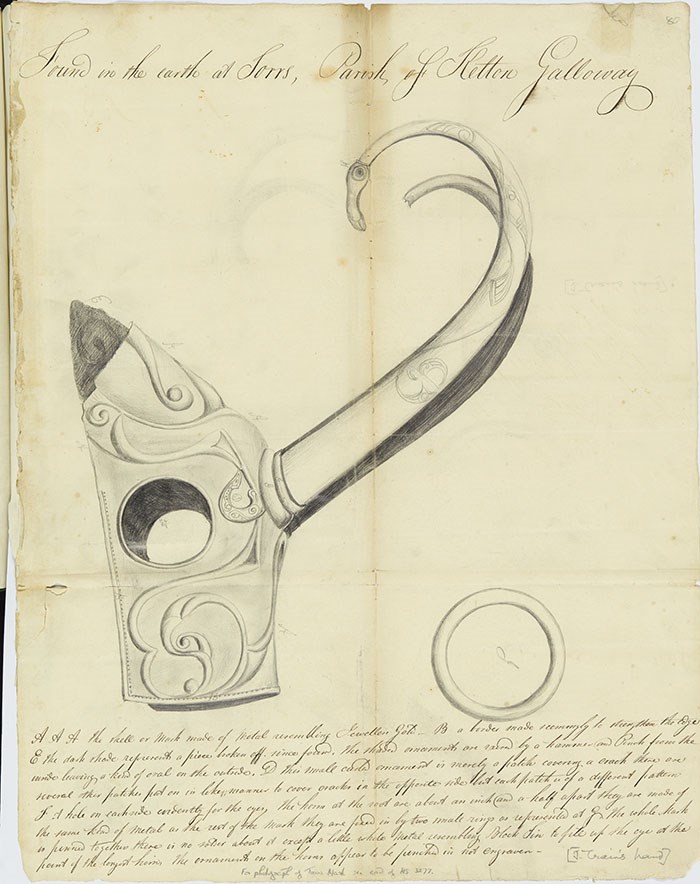
Above: Joseph Train’s drawing of the pony cap. © Reproduced by permission of the National Library of Scotland.
He passed it on to Sir Walter Scott, the novelist, playwright and poet, who collected curiosities. It was kept in his house at Abbotsford for many years, but was only identified as a piece of Iron Age Celtic art in 1867. However, its function puzzled scholars for a long time.
The cap is made from two pieces of sheet bronze which were riveted together, with a strengthening strip along the edges. The decoration is hammered up from behind (a technique called repoussé), with subtle details then worked in from the front.
The horns are made in two joining halves, and decorated on one side with engraved swirling designs. One of the cast bird’s head terminals is now lost.
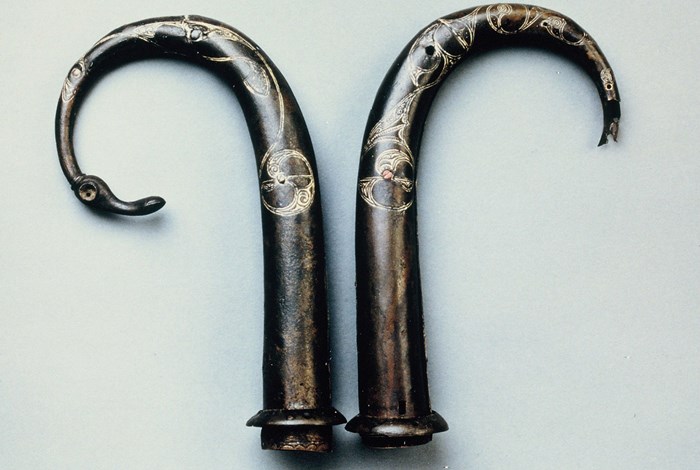
Above: The decorated faces of the two horns.
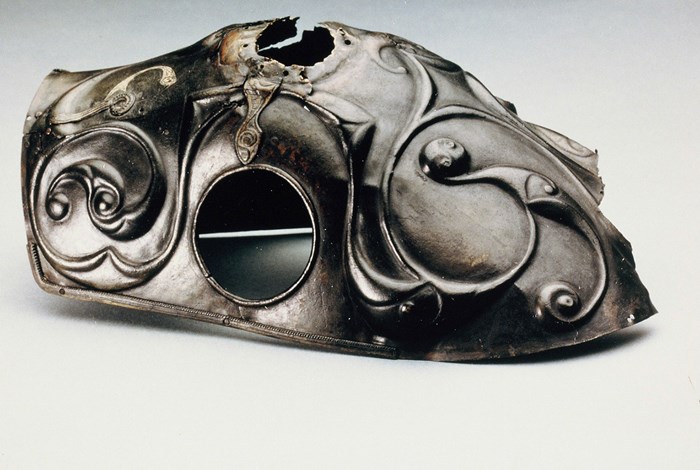
Above: The cap with horns removed.
The flowing lines of the decoration evoke vegetation, but within them you can see stylised birds’ heads. The horn terminal is more naturalistic, and probably represents a shoveler duck. Its eyes were once inlaid, probably with red coral or enamel.
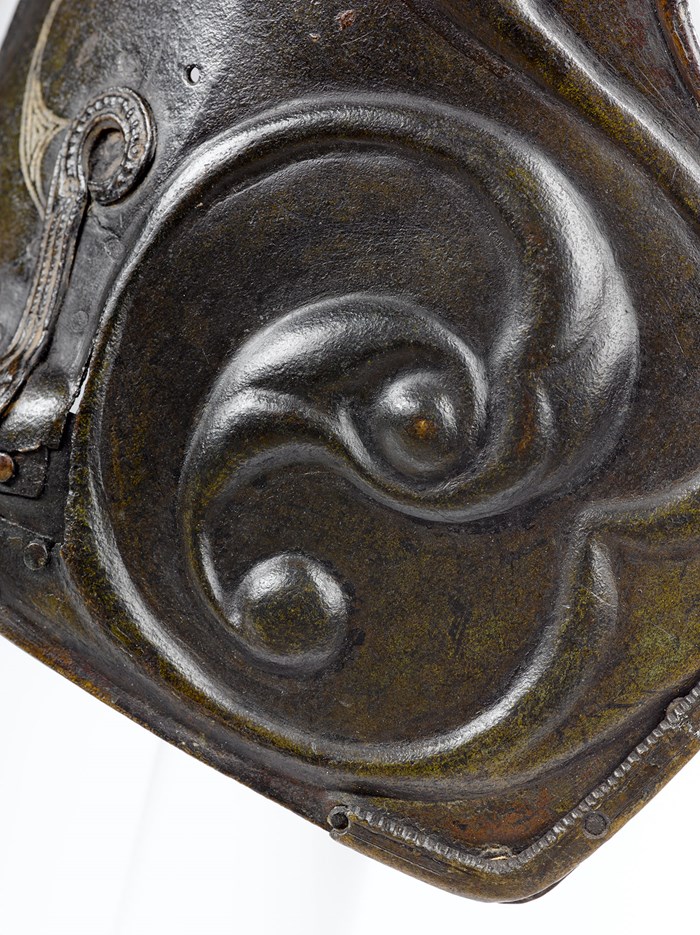
Above: The scrolling repoussé decoration can be seen as a bird’s head.
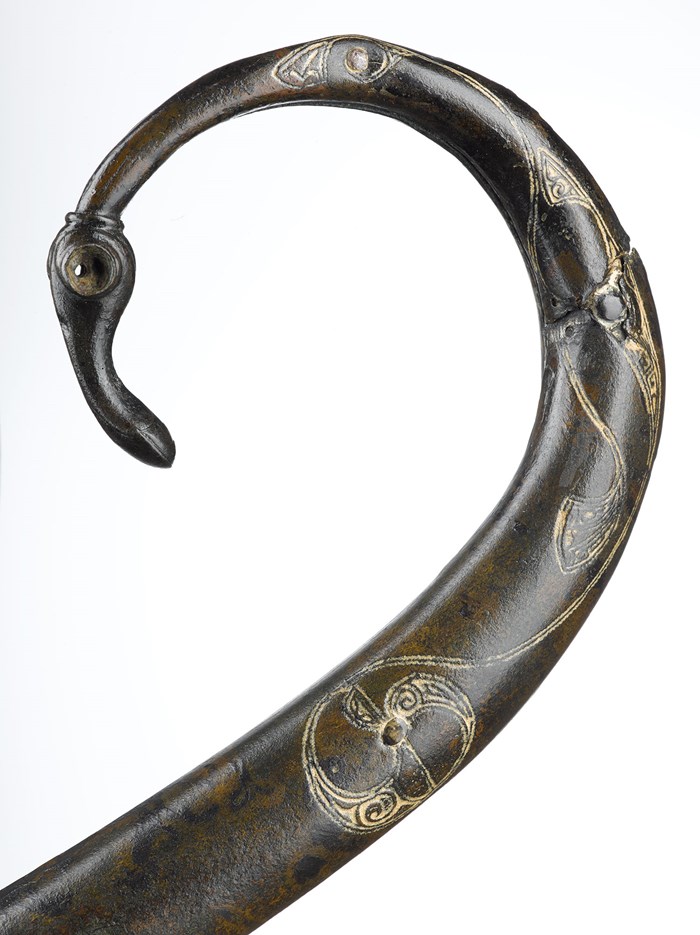
Above: Engraved tendrils of decoration on one horn, with a duck-head terminal.
The engraving on one horn includes a surprise. Tucked among the curls is a tiny human head! Human representations were very rare at this time.
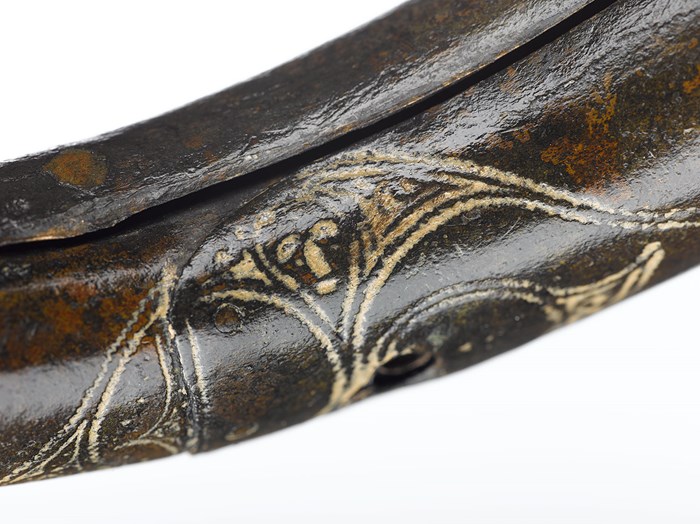
Above: A tiny face can be seen within the engraved decoration.
The decoration used on the pony cap is a British version of international styles. The flowing repoussé decoration is also found on other British finds such as this shield boss from Wandsworth, and is based on continental traditions.
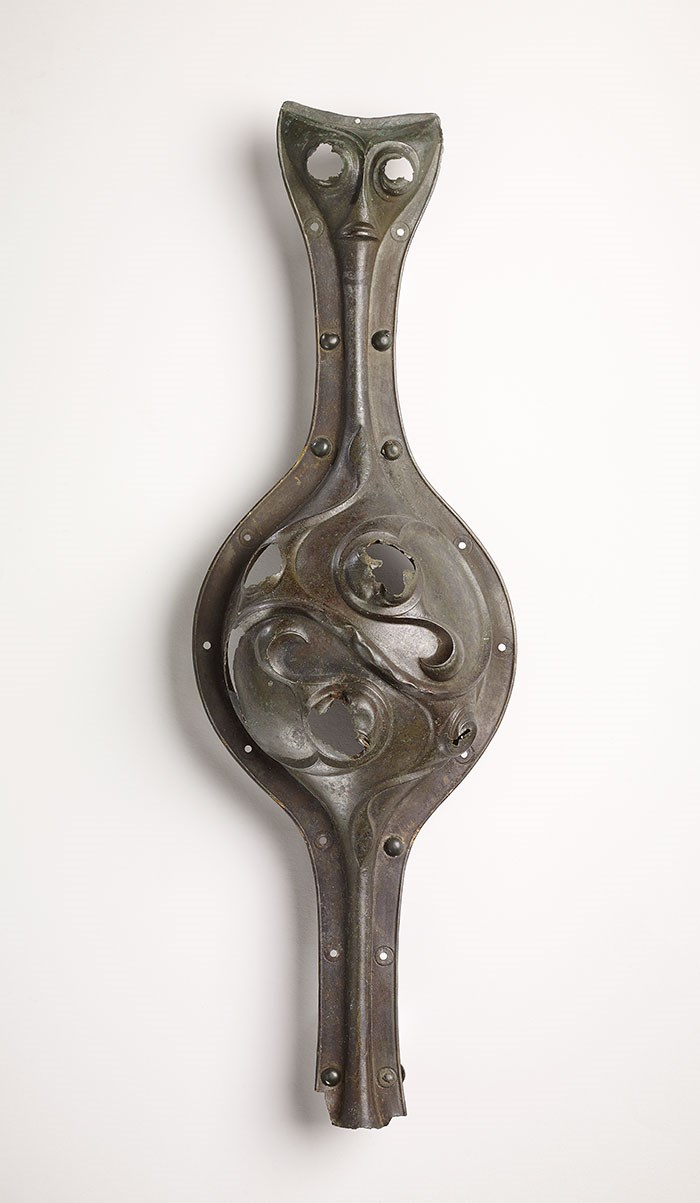
Above: Bronze shield boss, river Thames at Wandsworth, London, 300-200BC. © The Trustees of the British Museum.
Similar engraved decoration is found on sword scabbards all across Europe, from Ireland to Hungary. These parallels suggest that the Torrs cap was made in the 3rd century BC, perhaps in southern Scotland.
The Torrs cap had a long life, and had been extensively used and heavily repaired. Most of the repairs were carefully and artistically done, with decorative patches and engraving to hide the damage.
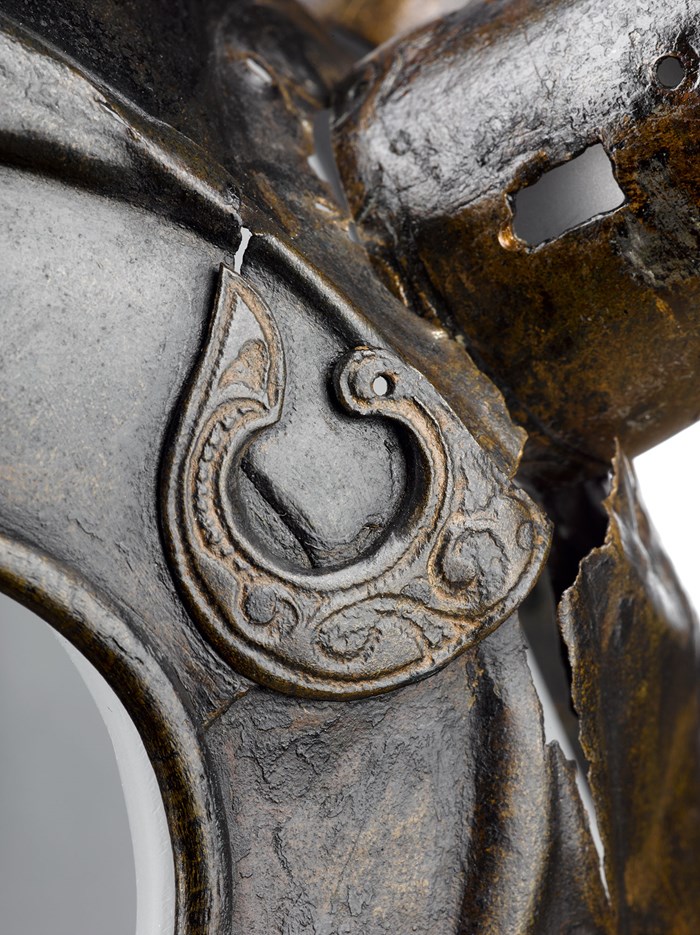
Above: Decorated C-shaped patch.
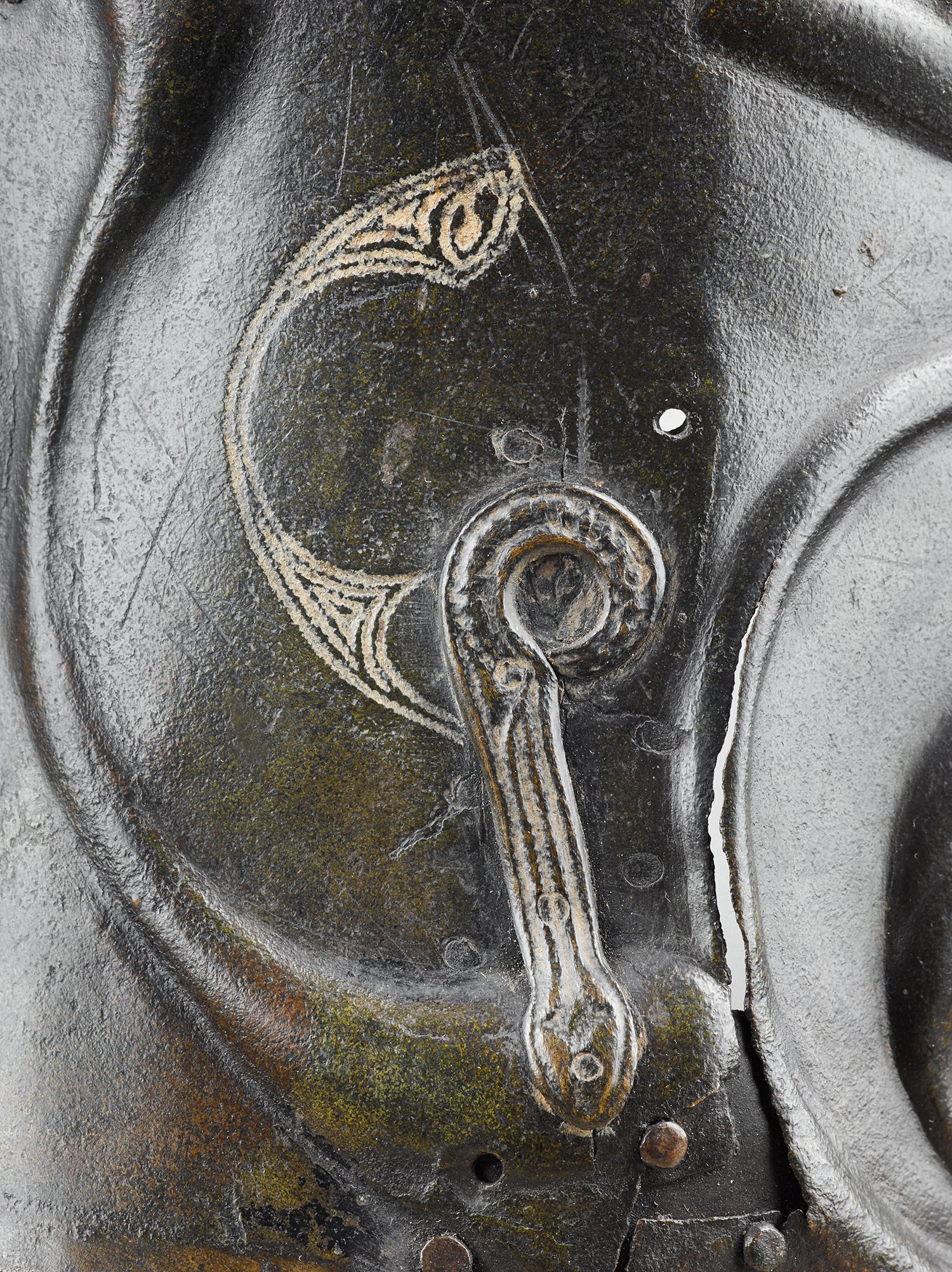
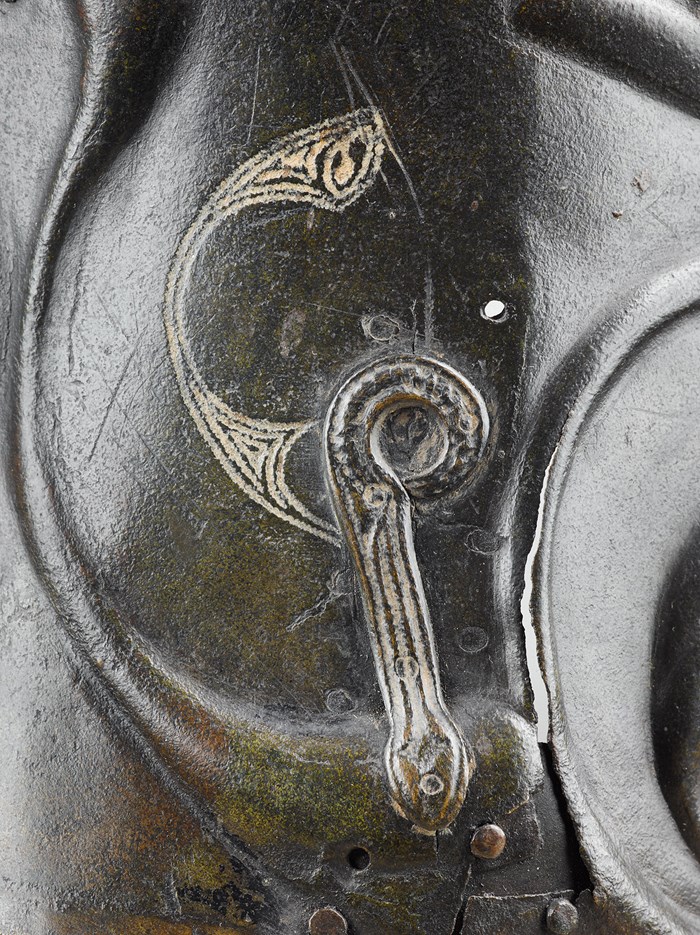
Above: Decorated patch, with an engraved area carrying its looped shape onto the cap.
When it was found, this object was thought to be a mask for people or horses. But there was a suspicion that the horns had been stuck to it after it was discovered, to increase its market value.
Did they come from something else originally – perhaps the ends of a chariot yoke? And were they fixed to the cap in the Iron Age, or in the 19th century?
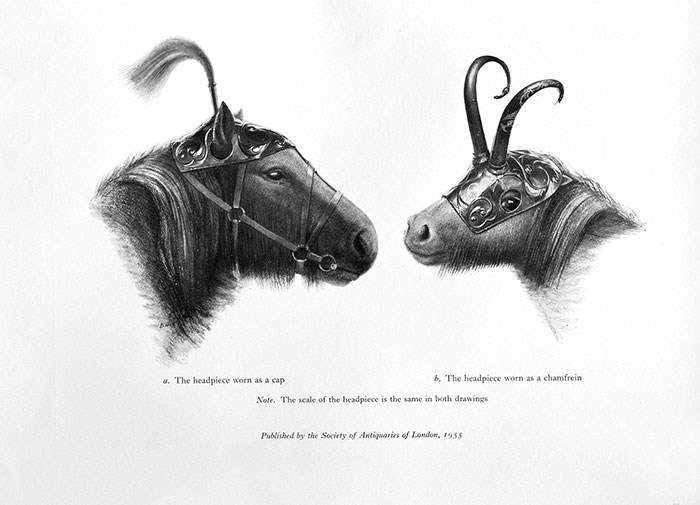
Above: Two possible interpretations of the Torrs object, as a cap or a mask. © By kind permission of the Society of Antiquaries of London.
The answer had been hiding in library archives. Researcher Stephen Briggs found a report of the discovery in a long-defunct newspaper, the Caledonian Mercury from 17 December 1812. This clearly shows that the horns were attached when it was found:
“There are two crooked horns, which project from between the circular openings …- Caledonian Mercury, 17 December 1812
It also tells us that the cap was not alone – other bronze objects were discovered too. Sadly these are now lost, but from the description they sound like pieces of horse harness.
We can now be confident about the object’s final appearance. The horns and cap were joined together in the Iron Age to make a decorative cap for a pony. Other evidence supports this. A small silver coin from south-east England shows Pegasus, a mythical winged horse, wearing such a horned cap.

Above: Silver coin of Tasciovanus showing a winged horse with a horned cap, 25BC-AD10.
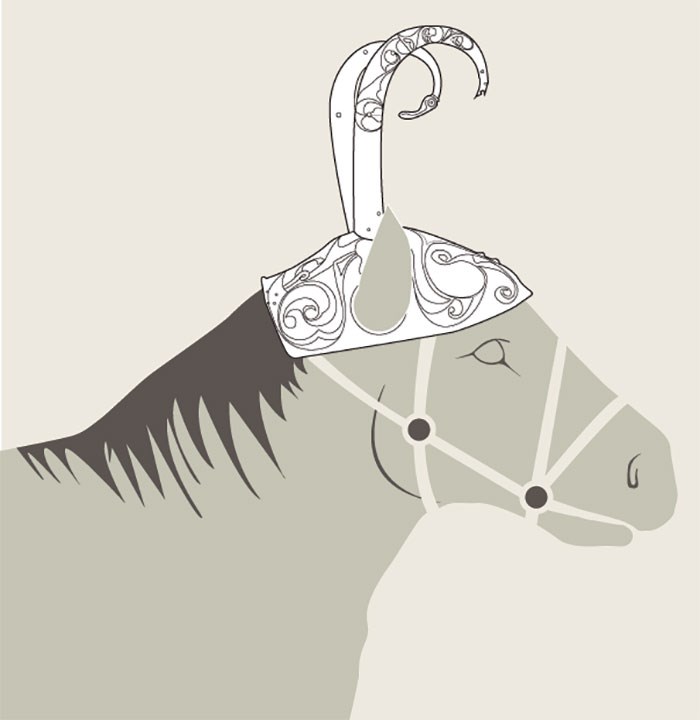
Above: Illustration of the cap in use. © The Trustees of the British Museum.